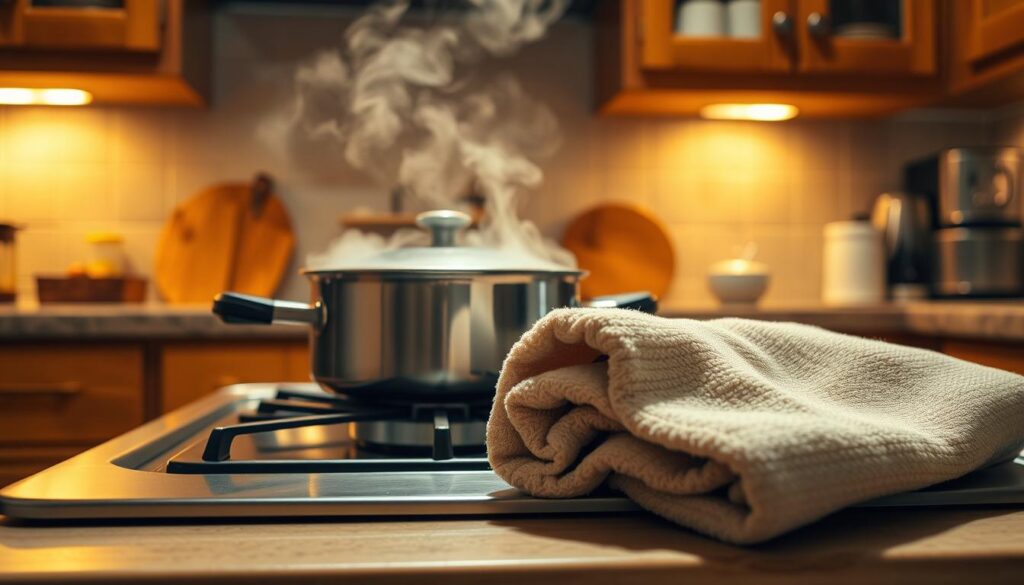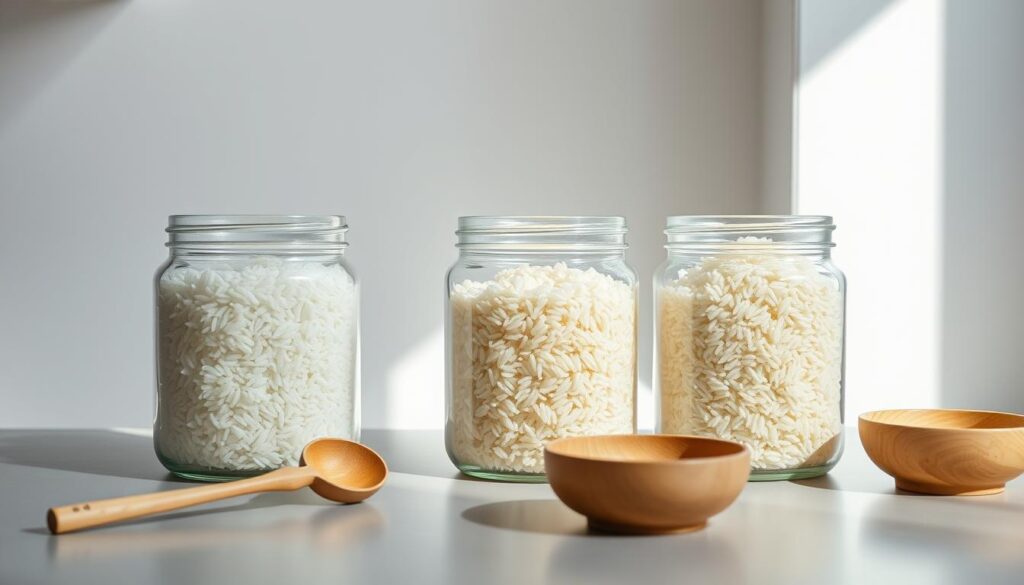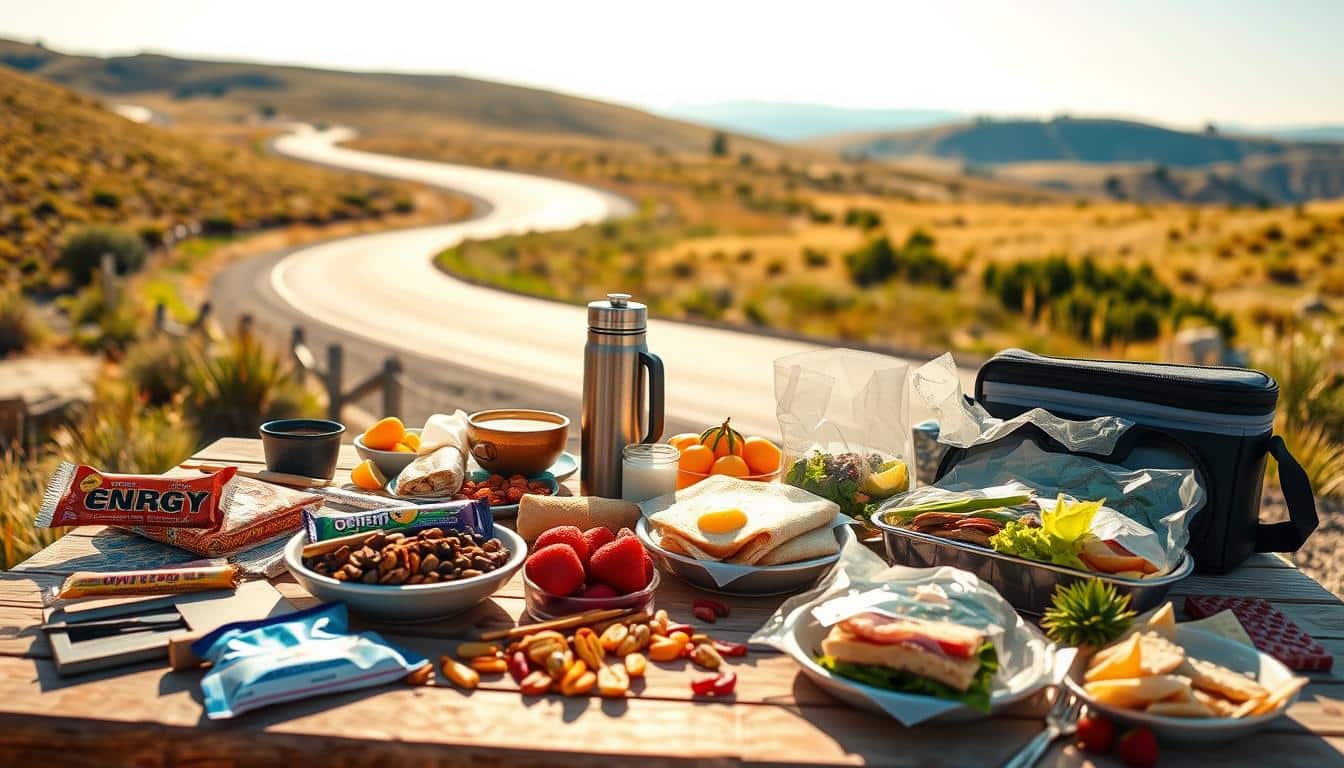Cooking perfect rice without a rice cooker is easier than you think. The Fuel-Up Rice Pot method makes it simple. You can make restaurant-quality rice with basic kitchen tools and smart techniques.
Forget about complicated equipment. Mastering rice preparation is all about understanding basic cooking principles.
Cooking rice without a rice cooker needs precision and the right approach. The Fuel-Up Rice Pot technique solves common problems like mushy textures or burnt bottoms. By using the right water ratios, pot, and cooking methods, you can make fluffy, tender rice like a pro.
Whether you’re making long-grain basmati or short-grain sushi rice, the Fuel-Up Rice Pot strategy works for all. Learning these techniques lets home cooks make perfect rice every time. It turns a tricky side dish into a skill you can rely on.
Our guide will show you how to pick the right pot and understand water ratios and cooking methods. Get ready to improve your rice cooking skills with simple, effective techniques. You’ll get delicious results every time.
Why Perfect Rice Matters for Your Kitchen Success
Learning how to cook rice perfectly changes your cooking game. Rice is more than a side dish; it’s the base of many meals. It adds flavor, texture, and joy to your meals.
A great white rice recipe does more than just cook rice. It creates a base that makes every dish better.
The best rice has:
- Tender grains that stay separate
- A fluffy texture without stickiness
- Clean, sweet taste in every bite
- Ability to go with many cuisines
Knowing how to cook rice is key in the kitchen. It affects how you plan meals and enjoy eating. One cup of uncooked rice makes about three cups of cooked rice. This makes rice a cheap and flexible ingredient.
Perfectly cooked rice is essential for any meal. It’s not just a side; it’s a main part of the dish. By mastering cooking techniques, home cooks can make dishes as good as those in restaurants.
Understanding Rice Types and Water Ratios
Cooking perfect rice begins with knowing the different rice types and their water needs. Each rice variety has its own cooking method. It’s important to find the right water ratio for each type.
Rice is divided into three main lengths, each with its own cooking style:
- Long Grain Rice: Stays separate and fluffy when cooked
- Medium Grain Rice: Slightly more sticky and tender
- Short Grain Rice: Most compact and sticky, ideal for sushi
Long Grain, Medium Grain, and Short Grain Varieties
Each rice type needs a special cooking method. Basmati, a long-grain rice, is less sticky and great for Indian dishes. Short-grain rice clumps together, making it perfect for sushi.
The Golden Rule: Rice to Water Ratios
Learning the right water ratio is key to cooking rice. For stovetop, use 1 cup of rice to 1.5 cups of water. In the microwave, use 2 cups of water for 1 cup of rice.
When to Rinse and When to Skip It
Rinsing rice affects how much water it absorbs. If you rinse, use 2 tablespoons less water per cup. This trick helps your rice stay fluffy and perfectly cooked, no matter the type.
Mastering the Fuel-Up Rice Pot
Choosing the right pot is key when learning to cook rice on the stove. The perfect rice pot can make your cooking better and ensure tasty results every time. It’s important to pick cookware that spreads heat evenly and keeps steam in.
- Heavy-bottomed construction for uniform heat spread
- Tight-fitting lid to trap critical steam
- Appropriate size for your rice quantity
The golden rule for cooking rice on the stove is the quarter-full principle. Raw rice should only fill one-quarter of your pot. This leaves enough room for the rice to expand during cooking, which can make it triple in size.
Pot size recommendations for rice cooking include:
- 1.5-2 quart pot: Ideal for small batches
- 2-3 quart pot: Perfect for family meals
- Larger pots: Suitable for entertaining or bulk cooking
Avoid using oversized pots that can cause the liquid to evaporate too fast. This can burn the rice. A well-chosen pot works like a rice cooker, making perfect steamed rice right on your stovetop.
Stovetop Rice Cooking: The Traditional Method
Learning to cook rice on the stovetop is key for anyone wanting to make tasty, fluffy grains at home. This old-school method is still a top choice for many. It brings restaurant-quality rice right to your kitchen.
Cooking rice on the stovetop needs careful attention and patience. This method lets you control every step. This ensures your rice always turns out perfectly.
Step-by-Step Guide to Stovetop Perfection
- Select a medium-sized saucepan with a tight-fitting lid
- Measure 1 cup of rice and 1.5 cups of water
- Bring the water and rice to a rolling boil over medium-high heat
- Watch for gentle, foamy bubbles across the entire surface
- Reduce heat to low and cover the pot completely
- Simmer for 13 minutes without lifting the lid
- Remove from heat and let stand, covered, for 10 minutes
- Fluff rice with a fork or rice paddle
Common Mistakes to Avoid
- Lifting the lid during cooking disrupts steam and affects texture
- Using incorrect water-to-rice ratios leads to mushy or dry rice
- Stirring rice while cooking can make it gummy
- Failing to let rice rest after cooking prevents proper moisture distribution
Stovetop rice cooking is a tried and true method. With a bit of practice, you’ll make rice that’s as good as any electric rice cooker.
Alternative Cooking Methods: Oven and Microwave
Exploring new ways to cook rice can change your kitchen routine. Rice cooking tips go beyond just using the stovetop. The oven and microwave offer quick and easy solutions for when you’re short on time.
Oven rice cooking is great for making big batches with little effort. The best pot for oven cooking is a deep casserole dish with a tight lid. Here’s how to cook rice in the oven:
- Preheat oven to 390°F (200°C)
- Use a covered casserole dish
- Combine rice and boiling water
- Bake for 35 minutes
- Let stand for 10 minutes after cooking
Microwave cooking is the fastest way to cook rice. It works best with a tall, microwave-safe container to avoid spills. Here’s how to cook rice in the microwave:
- Use boiling water for even cooking
- Choose a container at least 3-4 times taller than the water level
- Cook uncovered for 12 minutes on high
- Rest with cover for 10 minutes after cooking
Both oven and microwave methods can make great rice. They might have different textures. Try both to see which one you like best. The most important thing is to use the right water ratio and let the rice rest properly.
The Kitchen Towel Trick for Fluffy Rice
Getting perfect stovetop rice can be tough, but a simple trick can change your cooking. Chefs use a clever method to get rice cooker results on the stovetop.

Too much moisture ruins perfectly cooked rice. Stovetop cooking often traps steam, making rice soggy. Chefs have found a smart way to fix this problem.
How Steam Escape Creates Perfect Texture
The kitchen towel trick stops excess moisture in its tracks. Here’s how to use it:
- Bring rice and water to a boil in your pot
- Reduce heat to lowest simmer
- Place a clean kitchen towel over the pot
- Cover with the pot lid, ensuring towel doesn’t touch heat source
- Cook as directed in your recipe
Replicating Professional Rice Cooker Results
This easy trick mimics expensive rice cookers’ steam release. The towel soaks up condensation, keeping rice dry. You get fluffy, separate grains every time.
Chefs have used this trick for years to improve their rice. Now, home cooks can make restaurant-quality rice easily.
Troubleshooting Your Rice Cooking Problems
Rice cooking problems can be a big headache, even for seasoned cooks. Knowing how to fix common mistakes makes perfect rice a breeze. Troubleshooting rice is easy once you learn the right methods.
Most issues with rice cooking come down to a few main problems. Getting the temperature right, the right water ratio, and cooking time are key. These factors are crucial for perfectly cooked rice.
- Scorched Bottom: Use a smaller burner and appropriately sized pot
- Unabsorbed Water: Ensure complete liquid absorption before removing from heat
- Unevenly Cooked Grains: Avoid lifting the lid during cooking
- Hard Rice Texture: Adjust water quantity incrementally
To fix rice mistakes, first figure out what went wrong. For scorched rice, try using a smaller burner and a pot that fits your rice amount. If your rice won’t soak up water, keep cooking on low heat for 10 minutes after turning off the stove.
Cooking rice at high altitudes needs extra care. Add a minute of cooking time for every 1,000 feet above sea level. This helps your rice cook right, even at lower temperatures.
Getting good at cooking rice takes time. Every batch is a chance to get better and understand your cooking setup.
Storing, Reheating, and Using Leftover Rice
Rice is a versatile kitchen staple that can easily become a delicious meal with the right storage and reheating techniques. Learning proper storing cooked rice methods can help you reduce food waste and enjoy quick, tasty meals throughout the week.

Storing leftover rice requires careful attention to food safety and quality preservation. Here are some essential leftover rice tips to keep your cooked rice fresh and delicious:
- Cool rice quickly after cooking (within 1 hour)
- Store in an airtight container
- Refrigerate at or below 40°F
- Use within 4-6 days
Proper Storage Techniques
When storing cooked rice, divide it into small, shallow containers to help it cool faster. This prevents bacterial growth and maintains food safety. Seal the containers tightly to prevent moisture loss and protect the rice from absorbing other refrigerator odors.
Best Methods for Reheating Rice
Reheating rice can be tricky, but with the right technique, you can restore its original moisture and texture. The microwave method works best:
- Place rice in a microwave-safe bowl
- Add 2 teaspoons of water per 1 cup of cold rice
- Cover with plastic wrap
- Microwave on high for 1 minute
Pro tip: Cold rice becomes firm and dry, making it perfect for fried rice or other stir-fry dishes. One cup of uncooked rice typically yields 3 cups of cooked rice, providing multiple meal options.
Conclusion
Learning to cook perfect rice is a skill that changes your kitchen game. Now, you can make tasty rice dishes without fancy appliances. Simple stovetop methods can give you restaurant-quality rice at home.
Rice is a key ingredient in many dishes around the world. It’s perfect for Asian stir-fries and Mediterranean grain bowls. With the skills you’ve learned, you can cook different types of rice and adjust water and cooking methods with ease.
Keep practicing to get better at cooking rice. Each try will teach you more about controlling heat, water, and texture. Your Fuel-Up Rice Pot is now a tool for making fluffy rice that makes every meal better.
Start your culinary adventure. Cooking for yourself or others will be more fun with your new rice cooking skills. Remember, the best cooking comes from patience, practice, and a love for making tasty, healthy meals.
FAQ
What makes the Fuel-Up Rice Pot different from other cooking pots?
How much water should I use when cooking rice?
Do I really need to rinse rice before cooking?
What’s the kitchen towel trick for fluffy rice?
How can I prevent rice from burning or sticking to the bottom of the pot?
Can I cook different types of rice using the same method?
What’s the best way to store and reheat leftover rice?
How do cooking methods differ at high altitudes?
Content created with the help of Artificial Intelligence.



